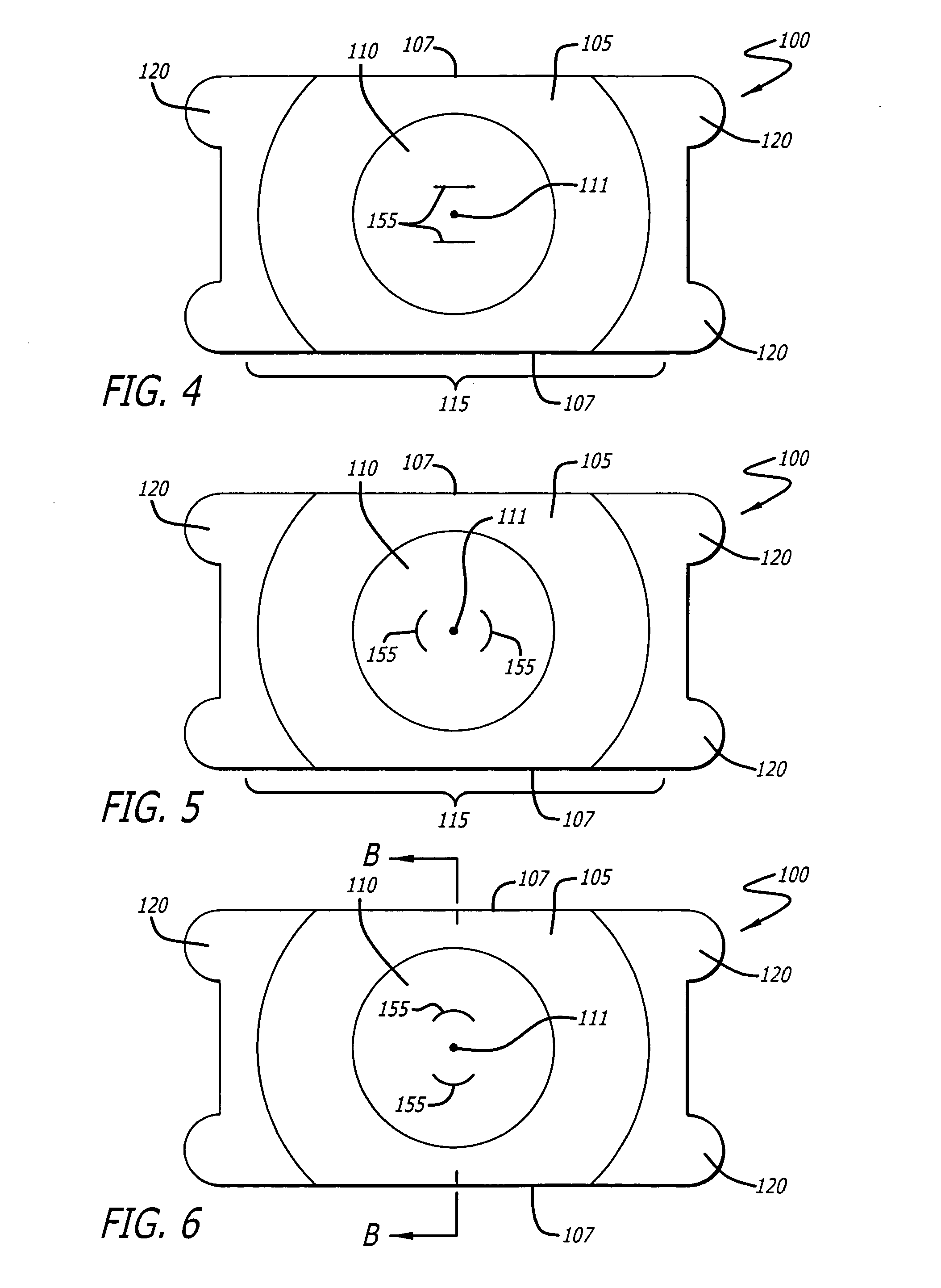Intraocular lens with distortion free valve
a technology of distortion-free valve and intraocular lens, which is applied in the field of implantable intraocular lens, can solve the problems of increasing intraocular pressure, iris bombe, and patients who undergo ocular surgery with an intraocular lens (iol) are at risk so as to prevent or reduce the occurrence of pseudophakic pupillary block and maintain distortion-free optics
- Summary
- Abstract
- Description
- Claims
- Application Information
AI Technical Summary
Benefits of technology
Problems solved by technology
Method used
Image
Examples
Embodiment Construction
[0039] Referring to the drawings, which are provided for purposes of illustration and by way of example, one or more embodiments of the present invention of an intraocular lens (IOL) are illustrated in FIGS. 1-8.
[0040] Referring first to FIGS. 1-3, in general terms, there is provided in the present invention an intraocular lens (IOL) 100. The IOL includes an optic 115, having a peripheral zone 105 circumscribing an optical zone 110. In at least one embodiment, the IOL further includes one or more haptics or fixation members 120 that are coupled to the peripheral zone and extend outwardly from the peripheral zone to assist in retaining the optic in position in an eye of a patient.
[0041] In one embodiment the fixation member 120 or members are preferably located so that the optical zone 110 is free of such member or members. The peripheral zone 105 preferably forms, in effect, a frame which assists in strengthening the optic 115 against unwanted deformation after implantation in the...
PUM
 Login to View More
Login to View More Abstract
Description
Claims
Application Information
 Login to View More
Login to View More - R&D
- Intellectual Property
- Life Sciences
- Materials
- Tech Scout
- Unparalleled Data Quality
- Higher Quality Content
- 60% Fewer Hallucinations
Browse by: Latest US Patents, China's latest patents, Technical Efficacy Thesaurus, Application Domain, Technology Topic, Popular Technical Reports.
© 2025 PatSnap. All rights reserved.Legal|Privacy policy|Modern Slavery Act Transparency Statement|Sitemap|About US| Contact US: help@patsnap.com



